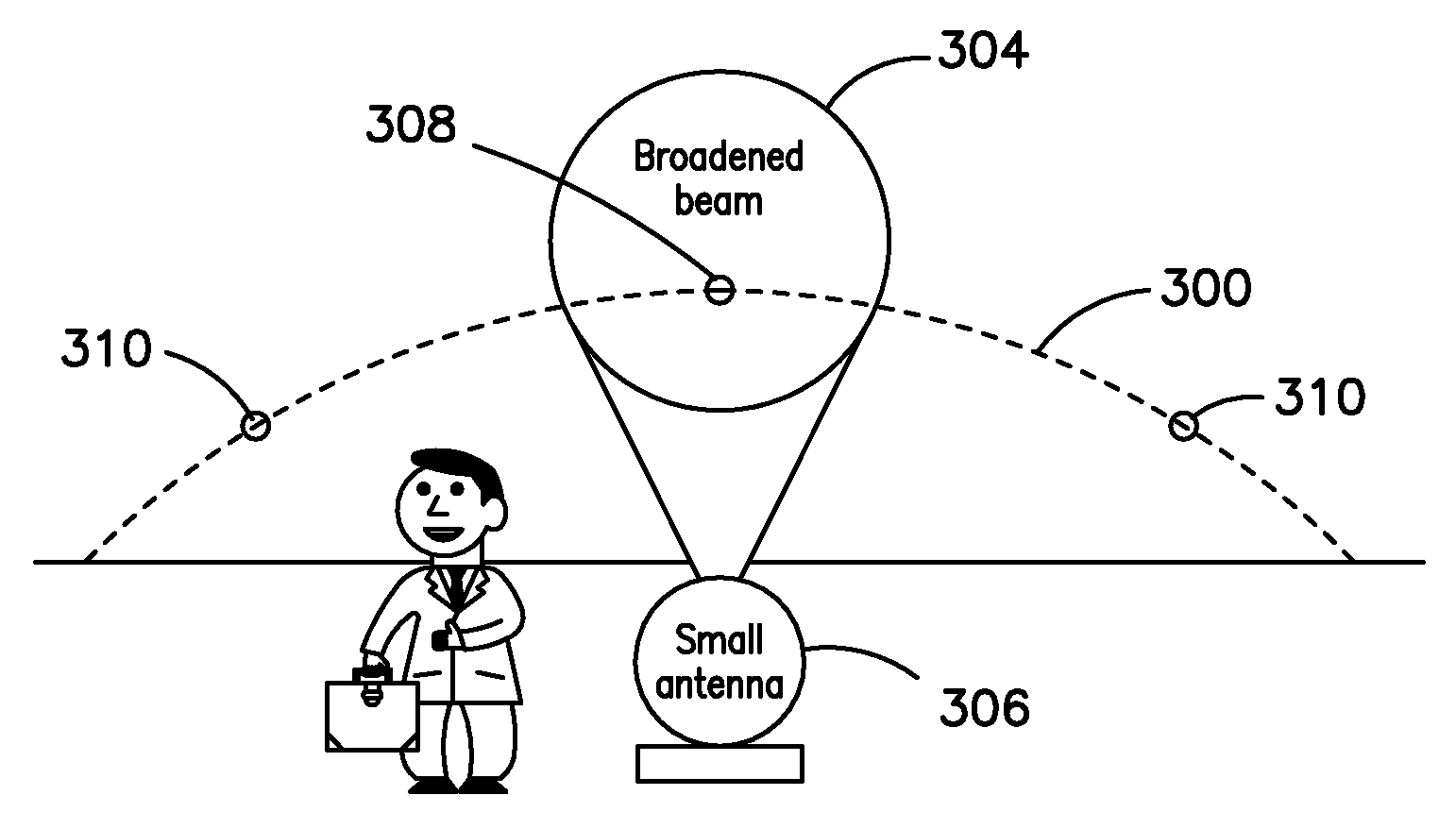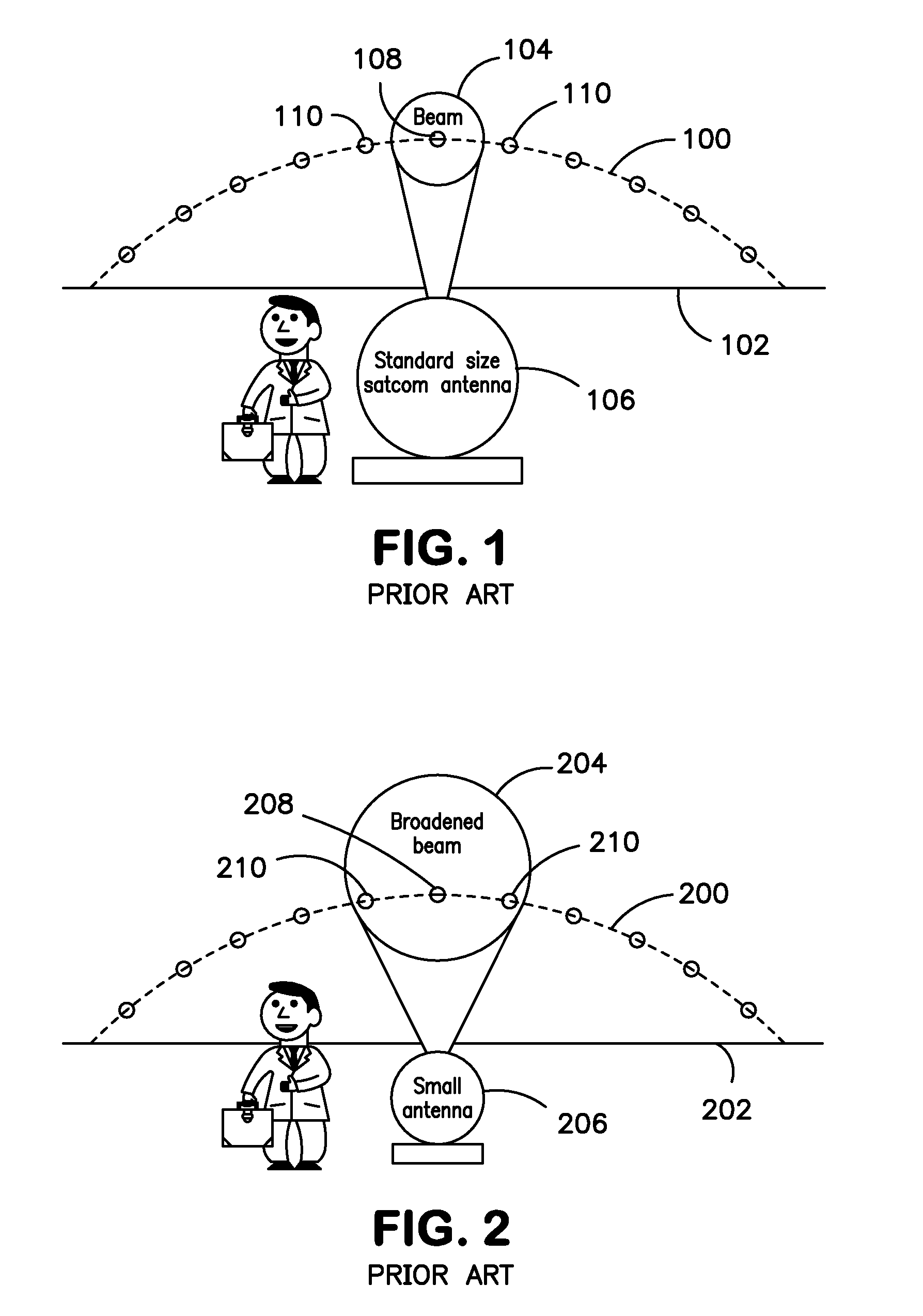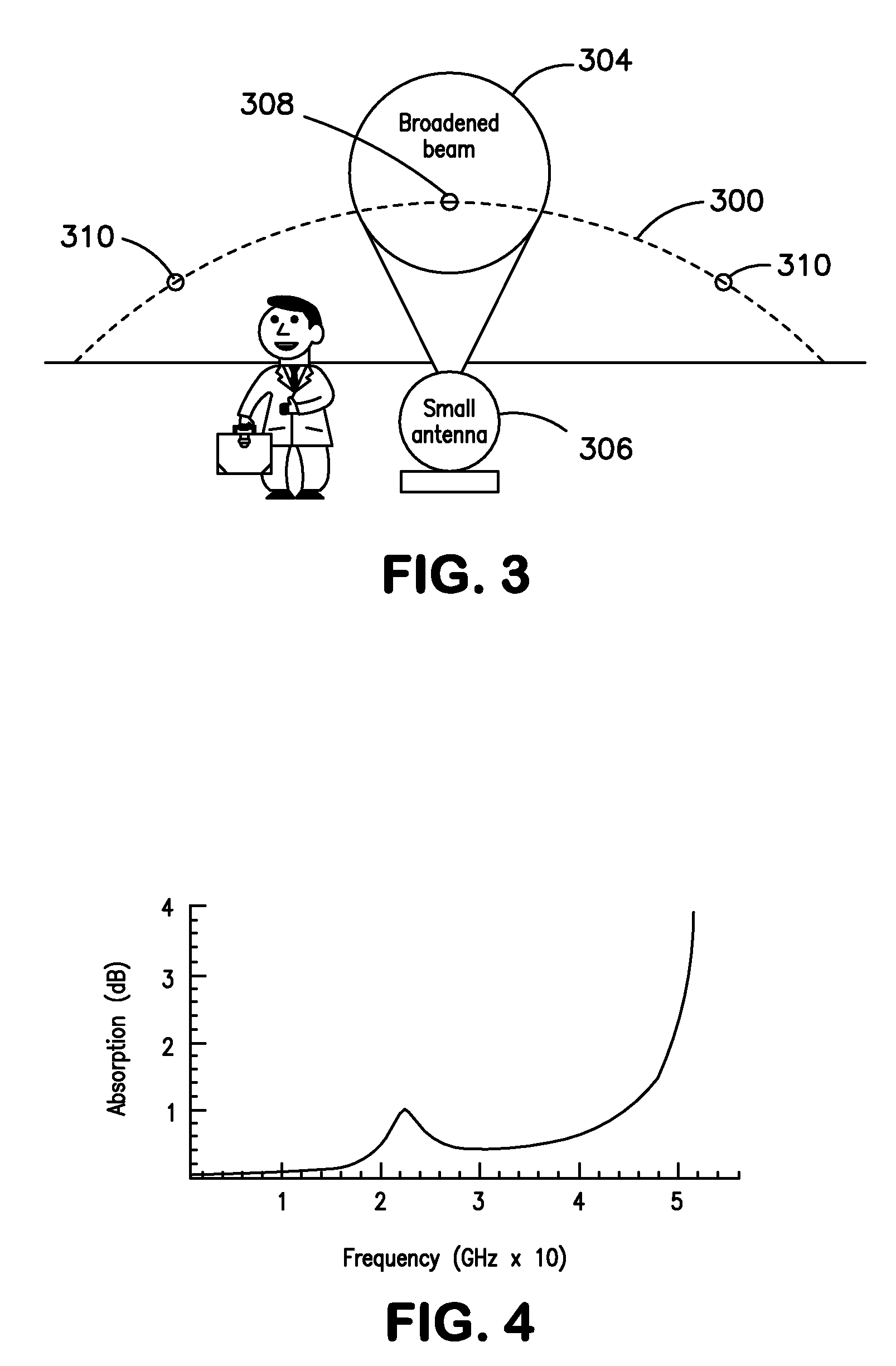Systems and methods for mobile satellite communications
a mobile satellite and communications technology, applied in the field of satellite communications systems and methods, can solve the problems of high cost of current terminals available for on-the-move mobile applications, harmful interference of adjacent satellites, and high cost of pay-when-use billing structure of mobile satellite services, and achieve the effect of low cos
- Summary
- Abstract
- Description
- Claims
- Application Information
AI Technical Summary
Benefits of technology
Problems solved by technology
Method used
Image
Examples
Embodiment Construction
[0030]This description, including the figures, describes embodiments that illustrate various aspects of the present invention. These embodiments are not intended to, and do not, limit the scope of the invention to particular details.
[0031]Commonly assigned and copending U.S. Patent Applications, identified by application Ser. Nos. 11 / 623,799; 11 / 623,821; 11 / 623,877; 11 / 623,902; and 11 / 623,986, all filed on Jan. 17, 2007, are incorporated herein by reference in their entirety.
[0032]The various entities identified in the Figures and described herein may each utilize one or more computer processors, and the computer processors of each entity may be configured to communicate with the computer processors of one or more of the other entities in order to carry out the methods of the present invention.
[0033]Systems and methods according to the present invention address, at least in part, a solution to the drawbacks of existing satellite systems using on-the-move and mobile terminals. Some f...
PUM
 Login to View More
Login to View More Abstract
Description
Claims
Application Information
 Login to View More
Login to View More - R&D
- Intellectual Property
- Life Sciences
- Materials
- Tech Scout
- Unparalleled Data Quality
- Higher Quality Content
- 60% Fewer Hallucinations
Browse by: Latest US Patents, China's latest patents, Technical Efficacy Thesaurus, Application Domain, Technology Topic, Popular Technical Reports.
© 2025 PatSnap. All rights reserved.Legal|Privacy policy|Modern Slavery Act Transparency Statement|Sitemap|About US| Contact US: help@patsnap.com



